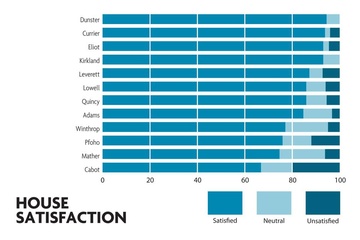Although the season is officially over, we can still see the white vestiges of winter—and it’s not just the snow. This year, the city of Boston used hundreds of thousands of pounds of salt to keep its roads, sidewalks, and walk- ways clear of ice, and that salt is still around. After it's done its job of preventing icy sidewalks, where does it go? How is it affecting the environment? Fifteen Minutes sat down with professor of Environmental Engineering Peter P. Rogers to get the answers.
FM: What sparked the use of deicing salts in the United States?
Rogers: Until the 1930s, we didn’t use deicing salts at all in the United States. They had snowplows, and snow accumulated on the roads, but people drove a lot slower, and of course there were fewer cars on the road. People knew how to drive in bad weather. They didn’t drive as fast back then. Nowadays, everybody expects to be able to drive at 70 miles per hour on the highway.... It’s not acceptable to do anything less. So it’s a fairly recent phenomenon, the use of these deicing salts.
FM: What exactly is in this deicing salt?
Rogers: Well, there is a whole bunch of [types of salt]. Mostly sodium chloride, which is cheap. Calcium chloride is one of the other salts they use, which is a lot more expensive, but works better at lower temperatures.... Then there are the toxic materials that [manufacturers] actually add to the salt. This actually surprises people. Cyanide salts! Why would you add cyanide to them? Well, you do that because of the corrosion on automobiles. Various cyanide salts reduce the amount of corrosion on steel or iron. So they’re really not worried about the environment; they’re worried more about the corrosion on automobiles.
FM: What are the environmental impacts of these deicing salts?
Rogers: Well, that’s quite serious, because you start thinking not just about the salt itself. Salt is a natural product; generally, it’s around in various quantities, except not in levels that we’re using. But then you start mobilizing other salts to put into [the manufactured salt], to achieve some other goals.... There are serious environmental consequences, of course. The obvious one is the salinization of the soils. The stuff gets knocked off the highways and blown around, and it damages the soils. It makes [the soil] too salty and puts too much sodium and chlorides in [it]. It corrodes the bridges, and corrodes the reinforcing bars in the concrete. Then it has an impact on species. It is very damaging to plants and also to many different types of wildlife that are out there.... My wife is furious, because we have a little grass strip out along the curbside in front of the house. She tends that grass and waters it and looks after it. Then the snow comes in, and they dump all the salts on top and it kills the grass.
FM: Are there any alternatives to salt use?
Rogers: In the short run, I don’t expect to see any huge reduction in the amount of salt use. Maybe better forecasting would be better. Maybe actually pulling back, using less and see what happens.... Then it’s nice to think about using public transit, but the way it collapsed with the recent snowstorms, you really got a lot of very unhappy people who went back to their automobiles. It’s all part of that urban and suburban life. The seasons get in the way. It’s not as though we all live in southern California where they don’t use any salt. We live in a different environment, and I think people trying to come to grips with that is important.... There are these new deicing chemicals [that can be used as alternatives to salt], but they’re less than one percent of the total use. And they’re going to be expensive.
FM: Where does the city store the huge amounts of salt it uses?
Rogers: Storing it is a problem. Take, for instance, the Cambridge Water Supply. Cambridge has very good water; it has its own water supply. Its reservoirs are Fresh Pond and two reservoirs out on Route 128. They’re on either side of Route 128 and that is where the MDC (the Metropolitan District Commissioner) stores its salt, right next to the water supply. Actually, for a long time they were uncovered, and [the salt] just leached into the ground...so there is a salt mine under those storage things. They now have built covers over them, but [the salt] was going into our drinking water. For a long time, Cambridge was having trouble meet- ing the chloride standards and the sodium standards on the drinking water. FM: If the salt is so bad for the environment, why haven’t we just stopped using salts altogether? Rogers: There was an experiment carried out in Lincoln, Mass. [The town] is full of very right-minded environmentalists; it’s a wealthy community. And so, [the town] decided that salt was bad for the plants and animals...it banned salt on the highways for one year. [Lincoln] posted signs on every road coming into [the town] from outside that said “No Salt,” “These Roads Have Not Been Salted,”[and] “You’re Traveling at Your Own Risk.” There were a couple of fatal accidents that year, due to people not paying attention to the signs. So the experiment was cancelled; they just decided it was too dangerous...[salting] is something that we [have to] do. People expect us to do it. It’s part of the unsustainability of the way that we live; we can’t do this forever.


